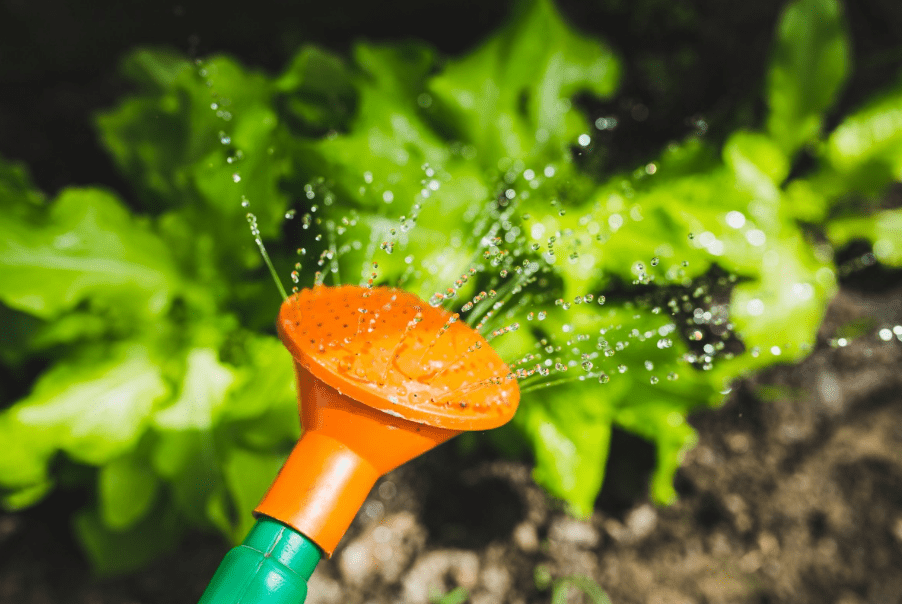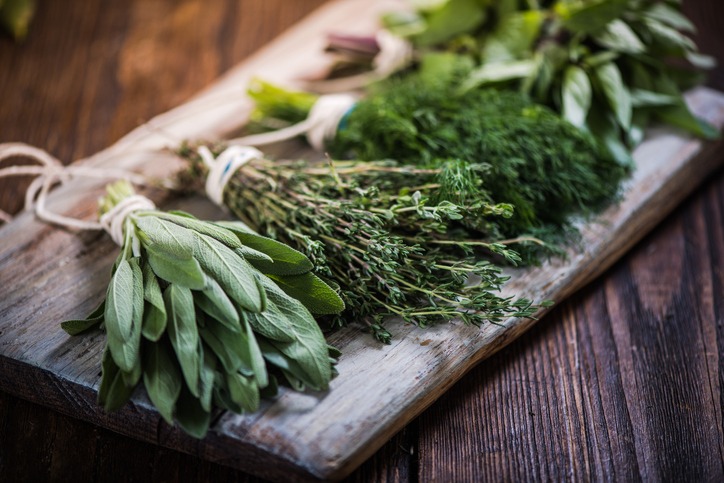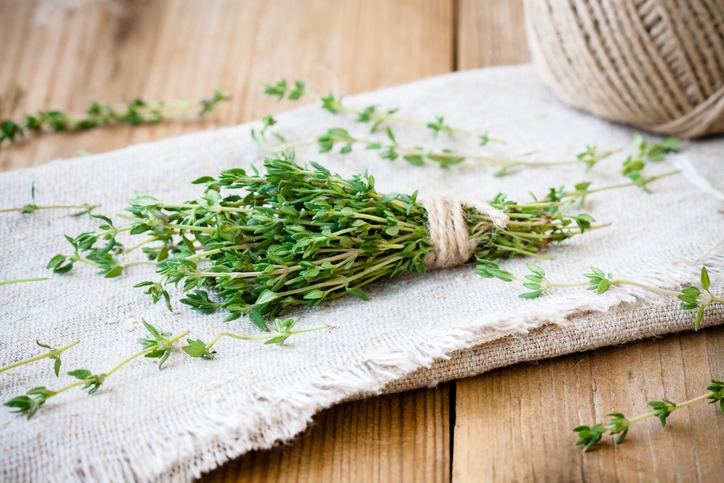What Are Vegetable Plant Guilds and How to Use Them on the Homestead
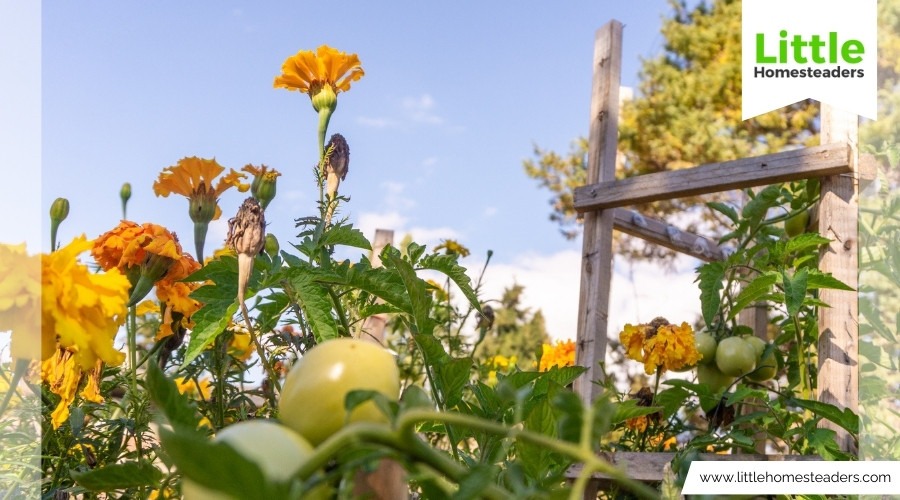
If you're a homesteader looking for a way to grow more food while working less, vegetable plant guilds might just be the secret weapon you've been searching for. Imagine your garden as a miniature ecosystem, where plants support one another, build healthier soil, and even keep pests at bay—naturally. Intrigued? Let's dig into what vegetable plant guilds are, why they're so beneficial, and how you can create your own.
What Are Vegetable Plant Guilds?
A vegetable plant guild is a thoughtfully arranged group of plants that work together to mimic the way natural ecosystems function. Instead of planting a single crop in neat rows, a guild combines plants with complementary roles. These mini-ecosystems help each other thrive by sharing nutrients, protecting the soil, deterring pests, and attracting pollinators.
At the heart of every guild is a central crop, often the plant you most want to grow. Surrounding it are supporting plants that fill specific roles, such as fixing nitrogen, repelling pests, or acting as ground cover. By carefully selecting and arranging these plants, you create a self-sustaining system that reduces the need for fertilizers, pesticides, and constant maintenance. Think of it as nature's cheat sheet for a more productive garden.
The Benefits of Vegetable Plant Guilds

Why should you bother with guilds when traditional planting methods seem easier? Because guilds work smarter, not harder, and they bring a host of benefits to your homestead:
Healthier Soil
Nitrogen-fixing plants like beans and peas enrich the soil, while dynamic accumulators such as comfrey pull up nutrients from deep within the ground. These plants act like nature's gardeners, constantly working to improve the soil without any effort on your part. Over time, the soil structure becomes more robust, retaining water better and resisting erosion. This benefit doesn't just help your plants; it also supports the long-term health of your entire garden.
Reduced Maintenance
Since guilds are designed to be self-sustaining, they cut down on weeding, watering, and fertilizing. Ground covers like clover suppresses weeds and retain moisture, while pest-deterrent plants like marigolds and nasturtiums keep harmful insects at bay. Imagine spending less time wrestling with weeds and more time enjoying the fruits (and vegetables) of your labor. Plus, with fewer chemical interventions needed, your garden becomes a safer space for kids, pets, and wildlife.
Increased Biodiversity
A garden with diverse plants attracts a variety of beneficial insects, birds, and other wildlife. These helpers pollinate your crops and keep pest populations in check, creating a more balanced ecosystem. A biodiverse garden is also a healthier one, as diversity reduces the risk of any single pest or disease wiping out your entire crop. This interconnected web of life makes your garden more vibrant and dynamic.
Higher Yields
When plants work together, they support each other's growth. For example, a guild designed around tomatoes might include basil to improve flavor and marigolds to ward off pests, resulting in healthier plants and better harvests. Higher yields don't just mean more food; they also mean a more efficient use of your garden space. This can be especially valuable if you're working with a small plot.
Greater Resilience
Guilds mimic natural ecosystems, which means they're better equipped to handle challenges like pests, diseases, and unpredictable weather. A well-designed guild can bounce back from setbacks more quickly than a monoculture garden. This resilience is especially important in today's changing climate, where extreme weather events are becoming more common.
The Key Components of a Vegetable Plant Guild
View this post on Instagram
A successful plant guild isn't just a random mix of plants. Each member of the guild has a specific role to play. Here are the five main components to include:
Central Crop
This is the star of your guild, the plant you're most excited about growing. It could be a tomato plant, a squash vine, or even a fruit tree. The rest of the guild revolves around supporting this crop. When choosing your central crop, consider its growing habits. Does it need a lot of space or sunlight? Does it have specific nutrient requirements? These factors will guide your choice of supporting plants.
Nitrogen-Fixing Plants
These plants, like beans, peas, or clover, capture nitrogen from the air and convert it into a form that other plants can use. They're the natural alternative to synthetic fertilizers. To maximize their benefits, plant nitrogen-fixers close to your central crop, where their nutrient contributions can have the greatest impact.
Nutrient Accumulators
Deep-rooted plants such as comfrey, horseradish, and dandelions draw nutrients from the subsoil and make them available to shallower-rooted plants. They're like the recyclers of your guild. Many nutrient accumulators can also be harvested for mulch or compost, adding even more value to your garden.
Ground Covers
Low-growing plants like creeping thyme, clover, or strawberries protect the soil from erosion, lock in moisture, and keep weeds at bay. They're the unsung heroes of the guild. When selecting a ground cover, look for plants that thrive in the same conditions as your central crop. For example, strawberries pair well with asparagus, as both enjoy similar growing environments.
Pest Deterrents
Plants like marigolds, nasturtiums, and garlic emit scents or chemicals that repel harmful insects. They act as the bodyguards of your central crop. Beyond deterring pests, some of these plants also attract predatory insects that feed on garden pests, providing a double layer of protection.
Bonus: Pollinator Attractors
Adding flowers like borage, sunflowers, or lavender can draw bees and other pollinators to your garden, ensuring your crops get the attention they need to produce fruit. Pollinator attractors are especially important if your central crop is heavily reliant on insect pollination, such as cucumbers or melons.
Popular Vegetable Plant Guild Examples
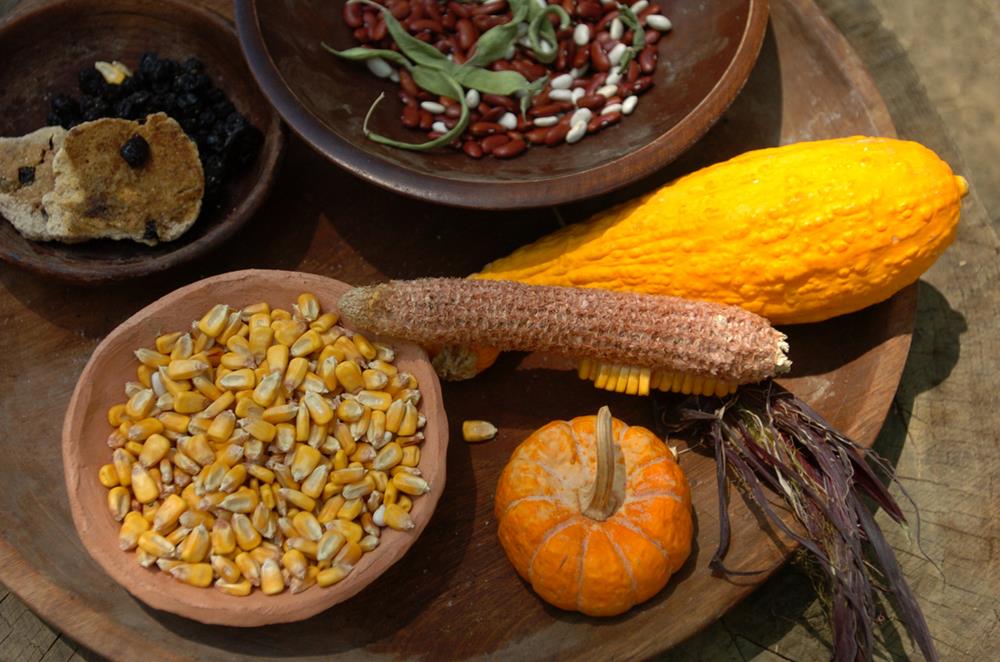
If you're new to plant guilds, it helps to start with combinations that have already been tested and proven. Here are a few classics:
Tomato-Basil-Marigold
This trio is a favorite for a reason. Basil enhances the flavor of tomatoes, marigolds repel pests, and all three plants thrive in similar conditions. To make the most of this guild, consider adding onions or garlic to further deter pests like aphids.
The Three Sisters (Corn, Beans, Squash)
A Native American classic, this guild uses corn for support, beans for nitrogen, and squash for ground cover. It's a perfect example of plants working together. For an even more robust guild, consider adding sunflowers to attract pollinators and provide additional shade.
Leafy Greens-Radishes-Nasturtiums
This guild combines quick-growing greens, root crops, and pest-repelling flowers for a diverse harvest and healthier soil. Radishes can also act as a trap crop, luring pests away from your greens.
Potato-Horsetail-Borage
Potatoes benefit from horsetail's nutrient accumulation and borage's ability to attract pollinators and deter pests. For an extra layer of protection, plant mint nearby to repel rodents and other small pests.
Brassica-Onion-Dill
Broccoli or cabbage teams up with onions to repel pests, while dill attracts beneficial insects and enhances flavors. Adding calendula to this mix can further deter pests while providing a splash of color.
Designing Your Own Vegetable Plant Guilds
Ready to create your own guild? Follow these steps to design a system tailored to your garden:
Start With a Central Crop
Choose a plant you love and want to prioritize. Consider factors like the growing season, space requirements, and your family's preferences. If you're unsure, start with a versatile crop like tomatoes or zucchini, which pair well with a variety of companion plants.
Add Supporting Plants
Pick plants that complement your central crop:
- Nitrogen-fixers to enrich the soil.
- Ground covers to protect and retain moisture.
- Pest repellents to guard your crops.
Include a mix of annuals and perennials to ensure year-round benefits. For example, perennial herbs like thyme can provide continuous ground cover, while annual flowers like nasturtiums add seasonal pest control.
Plan the Layout
Think about the size and spacing of each plant. Place taller plants in the center or north side to avoid shading smaller ones. Use diagrams to visualize your guild before planting. If you're short on space, consider vertical elements like trellises for climbing plants.
Experiment and Observe
Gardening is as much art as it is science. Watch how your guild performs and make adjustments as needed. Some plants might need to be swapped out, or you may discover unexpected synergies. Keep a journal to track your observations and refine your design over time.
Rotate Crops
To keep your soil healthy and prevent pests, rotate your central crop each season. For example, follow tomatoes with beans to replenish nitrogen. Rotating also helps break pest and disease cycles, keeping your garden resilient.
Avoid These Common Mistakes
Overcrowding
It's tempting to pack plants in tightly, but overcrowding leads to competition for resources. Give each plant room to grow. A good rule of thumb is to follow spacing recommendations on seed packets, adjusting slightly for guild designs.
Ignoring Compatibility
Some plants don't play well together. For example, onions can stunt the growth of beans. Research your choices carefully. Use companion planting charts as a guide, but don't be afraid to experiment.
Skipping Observation
Every garden is unique. Regularly check on your guild to see what's working and what isn't. Your best teacher is your own garden. Make a habit of walking through your garden daily to spot any issues early.
Tips for Success
- Start small. Test one or two guilds before expanding.
- Mix annuals and perennials for long-term benefits.
- Keep a garden journal to track what works and what doesn't.
- Don't be afraid to experiment—nature is forgiving!
- Invest in healthy, well-draining soil as the foundation for your guilds. Great soil is the starting point for any thriving garden.
Conclusion
Vegetable plant guilds are a powerful way to grow a thriving, low-maintenance garden that works with nature, not against it. By creating these mini-ecosystems, you'll enjoy healthier plants, higher yields, and a more resilient homestead. So grab a notepad, start planning your first guild, and let nature guide the way. Happy gardening!

